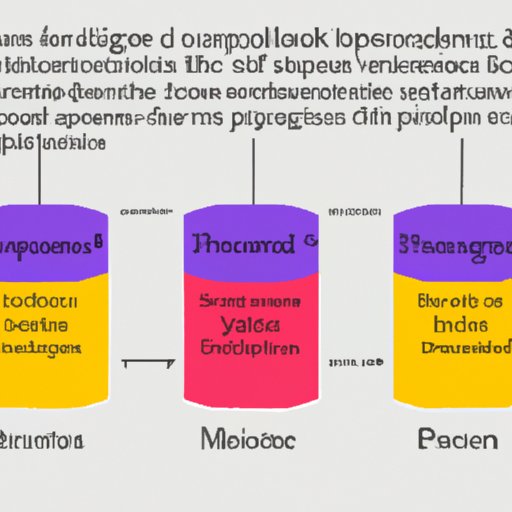Introduction
The Supreme Court is the highest court in the United States and its decisions have the power to shape our legal system. But how exactly does a case get to the Supreme Court? In this article, we will explore the steps in the Supreme Court review process and examine the roles of lower courts, the significance of the writ of certiorari, the impact of precedent on Supreme Court cases, and the role of amicus curiae briefs.
Examining the Role of Lower Courts in the Supreme Court Process
The first step in the Supreme Court review process is for a case to be heard in one of the lower courts. These courts include district courts, which are the trial courts, and circuit courts, which are the appellate courts. District courts hear cases involving federal law, as well as state law if the parties are from different states. Cases decided in district court can be appealed to the circuit court, which has the authority to review the decisions of the lower courts.
If a party is not satisfied with the decision of the circuit court, they may file an appeal to the Supreme Court. This is known as a petition for a writ of certiorari. A writ of certiorari is a document issued by the Supreme Court that orders a lower court to send up the record of a case so that the Supreme Court may review it.

Understanding the Significance of the Writ of Certiorari
The writ of certiorari is an important part of the Supreme Court process because it allows the Supreme Court to choose when and which cases it will hear. The Supreme Court receives thousands of petitions for writs of certiorari each year, but it only grants a few hundred. This means that the Supreme Court has the discretion to decide which cases it wants to review.
In deciding whether or not to grant a writ of certiorari, the Supreme Court considers factors such as the importance of the issue, the potential impact of the decision, and whether or not the lower court decision conflicts with decisions made by other courts. If the Supreme Court decides to grant the writ, then it will review the case.

Analyzing the Impact of the Precedent Factor on Supreme Court Cases
Another important factor that the Supreme Court considers when deciding whether or not to grant a writ of certiorari is the concept of precedent. Precedent is the idea that prior decisions of the Supreme Court should be followed in similar cases. In other words, if a similar case has already been decided by the Supreme Court, then the current case should be decided in the same way.
The Supreme Court also takes into account the decisions of other courts when deciding whether or not to grant a writ of certiorari. If there is a conflict between the decisions of the lower courts, then the Supreme Court is more likely to grant the writ in order to resolve the conflict. This helps to ensure consistency in the application of the law.

Investigating the Role of Amicus Curiae Briefs in Supreme Court Cases
Once a writ of certiorari has been granted, the Supreme Court will begin to review the case. During this process, the Court may solicit input from individuals or organizations who are not directly involved in the case. These individuals or organizations are known as amici curiae, or “friends of the court.” An amicus curiae brief is a legal document that provides information or arguments to the Supreme Court that may help it decide the case.
Amici curiae briefs can provide important insights into the issues at hand, and they can often sway the opinion of the Court. For example, an amicus curiae brief may present evidence or arguments that were not considered by the lower courts and may convince the Supreme Court to reach a different conclusion than the lower courts did.
Conclusion
The Supreme Court plays an important role in the U.S. judicial system, and the process of getting a case to the Supreme Court is complicated and lengthy. This article has explored the steps in the Supreme Court review process and examined the roles of lower courts, the significance of the writ of certiorari, the impact of precedent on Supreme Court cases, and the role of amicus curiae briefs. We hope this article has provided you with a better understanding of the Supreme Court process.
For more information on the Supreme Court and the judicial system, please consult the resources provided by the United States Department of Justice.
(Note: Is this article not meeting your expectations? Do you have knowledge or insights to share? Unlock new opportunities and expand your reach by joining our authors team. Click Registration to join us and share your expertise with our readers.)
